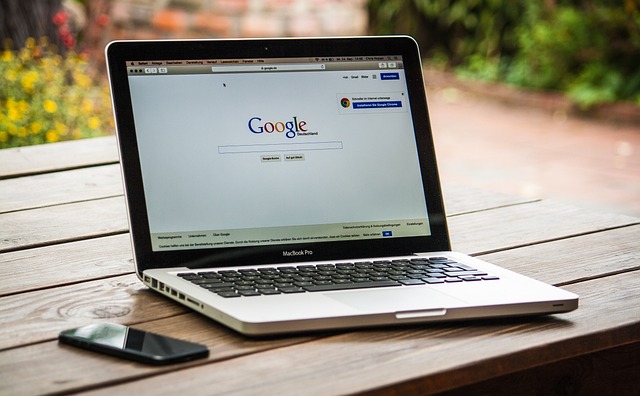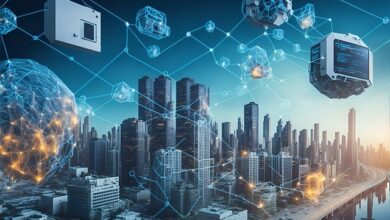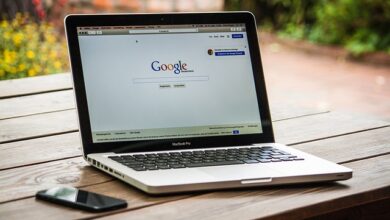
Introduction
In today’s rapidly evolving technological landscape, the Internet of Things (IoT) stands out as a transformative force, redefining the way we interact with our environment. The concept of IoT refers to the network of interconnected devices that communicate and share data over the internet. These devices, ranging from everyday household items to sophisticated industrial machinery, work together to create a more integrated and intelligent world. This article explores the fundamentals of IoT, its applications, benefits, challenges, and future potential.
Understanding the Internet of Things
At its core, IoT involves embedding sensors, software, and other technologies into physical objects to enable them to connect and exchange data with other devices and systems over the internet. This connectivity transforms ordinary objects into “smart” devices that can collect, transmit, and act on data autonomously.
1. Key Components of IoT
- Devices/Sensors: These are the physical objects embedded with sensors and actuators that collect data from the environment or perform specific actions based on data received. Examples include smart thermostats, wearable fitness trackers, and industrial machinery.
- Connectivity: This component refers to the network infrastructure that allows devices to communicate with each other. Connectivity options include Wi-Fi, Bluetooth, Zigbee, cellular networks, and more.
- Data Processing: Collected data needs to be processed to be useful. This is typically done through cloud computing platforms or edge computing systems, which analyze and interpret the data to provide actionable insights.
- User Interface: This is the medium through which users interact with IoT devices. It could be a mobile app, a web dashboard, or even voice-controlled systems.
2. How IoT Works
The IoT ecosystem operates through a series of steps:
- Data Collection: Sensors embedded in devices collect data from their surroundings. For instance, a smart thermostat measures room temperature.
- Data Transmission: The collected data is transmitted over a network to a central system or cloud server.
- Data Processing and Analysis: The data is processed and analyzed to extract meaningful information. This step often involves algorithms and machine learning models to identify patterns and trends.
- Action: Based on the analysis, actions are taken automatically or via user intervention. For example, a smart thermostat might adjust the temperature based on the user’s preferences or external weather conditions.
Applications of IoT
IoT technology is pervasive, touching various aspects of our lives. Here are some prominent applications:
1. Smart Homes
Smart homes use IoT devices to enhance comfort, security, and energy efficiency. Examples include:
- Smart Thermostats: Devices like the Nest Learning Thermostat automatically adjust home temperatures based on user behavior and weather conditions, leading to energy savings.
- Smart Lighting: Systems such as Philips Hue allow users to control lighting remotely, set schedules, and create ambiance with color-changing bulbs.
- Home Security Systems: IoT-enabled security cameras, doorbells, and alarms provide real-time monitoring and alerts to ensure home safety.
2. Healthcare
IoT has significant implications for healthcare, often referred to as the “Internet of Medical Things” (IoMT):
- Wearable Devices: Smartwatches and fitness trackers monitor vital signs such as heart rate, sleep patterns, and physical activity, providing valuable data for personal health management.
- Remote Patient Monitoring: Devices that track patient health metrics and transmit data to healthcare providers enable remote monitoring and early intervention, reducing the need for frequent hospital visits.
- Smart Medical Devices: IoT-enabled medical equipment, like insulin pumps and connected inhalers, ensure accurate and timely delivery of treatments.
3. Industrial IoT (IIoT)
In the industrial sector, IoT is used to optimize operations, improve efficiency, and reduce downtime:
- Predictive Maintenance: Sensors on machinery monitor performance and detect potential issues before they cause failures, minimizing unplanned downtime and repair costs.
- Supply Chain Management: IoT devices track goods and inventory in real-time, improving supply chain visibility and management.
- Energy Management: IoT systems monitor and manage energy consumption in industrial facilities, leading to cost savings and sustainability improvements.
4. Agriculture
IoT applications in agriculture are revolutionizing farming practices:
- Precision Farming: Sensors and drones collect data on soil conditions, weather, and crop health, allowing farmers to make data-driven decisions and optimize resource use.
- Smart Irrigation: IoT systems monitor soil moisture levels and weather forecasts to automate irrigation, conserving water and enhancing crop yields.
5. Transportation and Smart Cities
IoT is also making cities smarter and transportation more efficient:
- Traffic Management: IoT sensors monitor traffic flow and adjust signal timings to reduce congestion and improve traffic management.
- Public Transportation: Real-time tracking of buses and trains provides accurate arrival times and enhances the overall passenger experience.
- Smart Infrastructure: IoT-enabled streetlights, waste management systems, and environmental sensors contribute to more efficient and sustainable urban living.
Benefits of IoT
The adoption of IoT brings numerous benefits across various domains:
- Increased Efficiency: Automation and real-time data analysis lead to improved operational efficiency and reduced manual intervention.
- Cost Savings: Predictive maintenance, energy management, and optimized resource usage translate into significant cost savings for businesses and individuals.
- Enhanced User Experience: Smart devices provide convenience and personalization, improving the overall quality of life.
- Data-Driven Insights: IoT generates valuable data that can be analyzed to gain insights, make informed decisions, and drive innovation.
- Improved Safety and Security: IoT-enabled security systems and health monitoring devices enhance safety and well-being.
Challenges and Considerations
Despite its advantages, IoT faces several challenges:
- Security and Privacy: The proliferation of connected devices increases the risk of cyberattacks and data breaches. Ensuring robust security measures and data privacy is crucial.
- Interoperability: With a wide range of devices and standards, achieving seamless integration and communication between different IoT systems can be challenging.
- Data Management: The vast amount of data generated by IoT devices requires efficient storage, processing, and analysis to be useful and manageable.
- Scalability: As IoT networks expand, scaling infrastructure and maintaining performance can become complex and resource-intensive.
- Regulatory Compliance: Compliance with data protection regulations and standards is essential to avoid legal issues and ensure user trust.
The Future of IoT
Looking ahead, IoT is expected to continue evolving and expanding:
- 5G Integration: The rollout of 5G networks will enhance IoT connectivity with faster speeds, lower latency, and greater capacity.
- Artificial Intelligence (AI): AI and machine learning will further enhance IoT capabilities by enabling more sophisticated data analysis and autonomous decision-making.
- Edge Computing: Processing data closer to the source (edge computing) will reduce latency and improve the performance of IoT applications.
- Smart Everything: The vision of a fully connected world will see IoT integration in more aspects of daily life, from smart cities and autonomous vehicles to advanced healthcare solutions.



